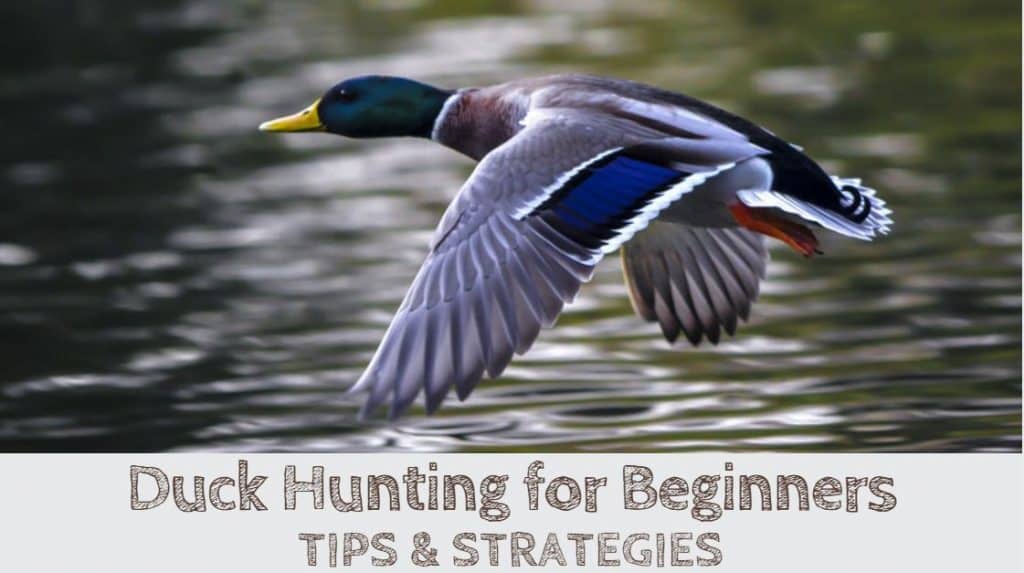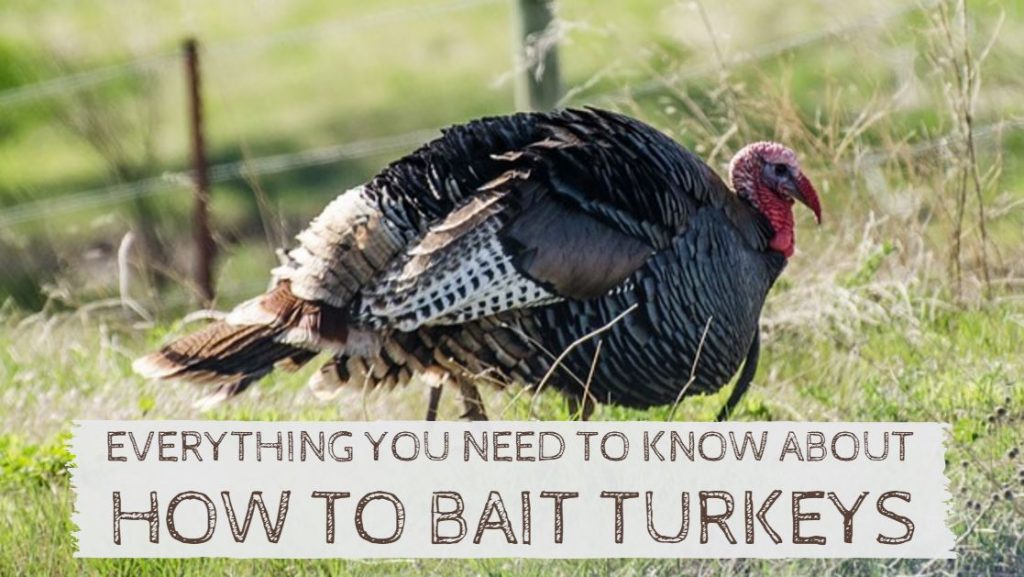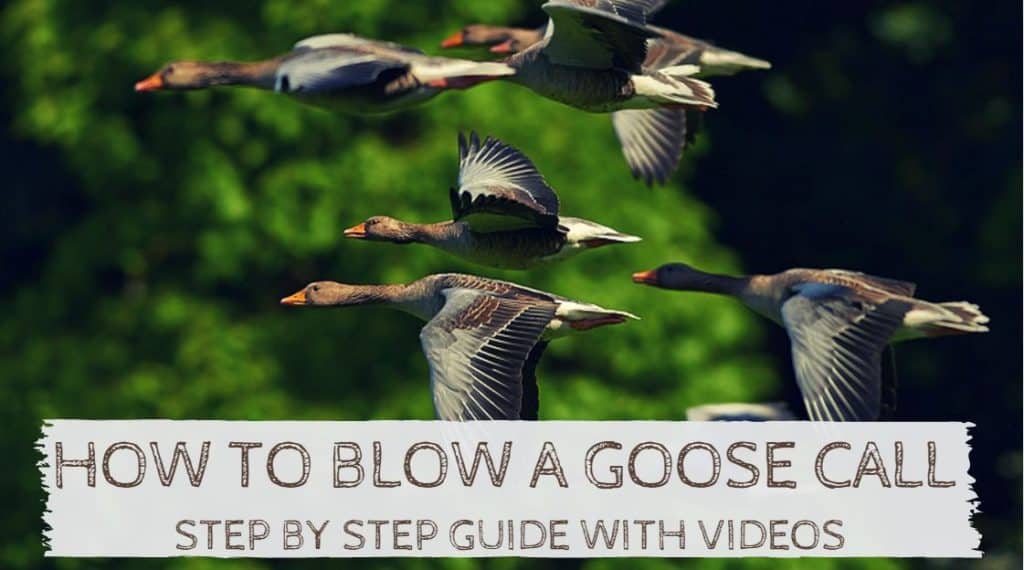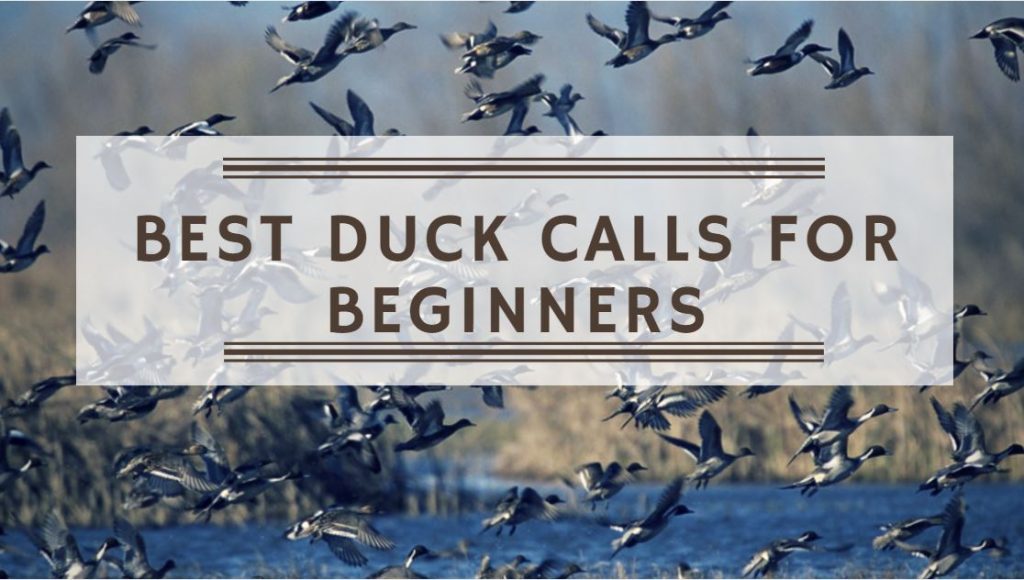Duck Hunting for Beginners: Duck hunting is thrilling as well as challenging for both beginners and veteran hunters alike. Going by the many aspects that comprise duck hunting from duck decoys to field dressing, the need for a guide is inevitable.
So our duck hunting for beginners guide will give you a feel of what to expect in your waterfowl hunting endeavors.
Types of Waterfowl
There are various species of waterfowl in North America. They include puddle or dabbling ducks, diving ducks, sea ducks, geese and swans, and whistling ducks.
Dabbling Ducks
Dabbling ducks derive their name from what they do as they eat; they dabble.
Mostly found in shallow waters or shores, they submerge their heads and necks below the water in search of aquatic plants, grains, and insects.
Some examples of these ducks are the Northern Pintail, American Wigeon, and Cinnamon Teal.
Diving Ducks
Diving ducks are so-called because of their unique nature of diving headlong underwater.
They are found in deep waters and consume their food while under the water.
Stifftails, Sea ducks, and Pochards are some examples of diving ducks.
Sea Ducks
Sea ducks constitute 42% of the duck species in North America.
Needless to say, they live in the sea and are excellent divers.
They have a lifespan of up to seven years and breed after three years of life.
Some examples of sea ducks are Eiders, Goldeneyes, and Scoters.
Geese and Swans
Geese and swans have the largest body size among the duck species. Swans are the larger of the two.
Geese are mainly found on land and feed on plants. Swans mainly feed on aquatic plants and small animals.
While geese lay and nest their eggs in their second year of life, swans breed in their fourth.
The snow goose and the trumpeter swan are some examples of geese and swans respectively.
Whistling Ducks
Whistling ducks produce whistling sounds, hence the name. They closely resemble geese and swans.
In the entire globe, whistling ducks are categorized into eight species.
Some examples include the spotted, fulvous, and black-bellied whistling ducks. The black-bellied and fulvous whistling ducks are found in the United States. Both species lay eggs and nest within the first year of their lives.
Waterfowl Hunting Techniques
Waterfowl are hunted mainly using three ways namely: hunting over decoys, jump-shooting, and pass-shooting.
Hunting Over Decoys
In the hunting over decoys strategy, the primary objective is to draw the ducks nearer you.
Visible duck decoys are spread in an area that ducks frequent such as along a shoreline or field. The pattern of the decoys can take a ‘C’ or ‘J’ shape. The ducks are expected to land on the open sides of the decoy patterns.
The open side is also parallel to the wind direction, which is the natural flight direction of the birds. The decoys ‘lure’ the ducks to themselves.
Meanwhile, you, the hunter, should be strategically positioned and properly camouflaged from head to toe, to increase your shooting chances for a bountiful hunt.
Jump-Shooting
Jump-shooting requires a stealth movement of rowing, walking, or crawling to the location of the ducks and shooting the ducks within the shooting range.
For effective hunting using this strategy, obtaining as much information about the birds is a must. This will require the best stalking techniques for maximum bird yield.
For instance, you will need to be adequately camouflaged and use existing plants to conceal your identity.
Your level of alertness is heightened when you have a mindset of expecting ducks and geese anywhere and anytime. Listening to sounds made by these birds is, therefore, a useful practice.
Pass-Shooting
Pass-shooting involves laying in wait for the ducks at a location where they pass as they go in search of food from where they roost.
Once you get the ducks or geese’ travel routes and timings right, a place where you can position yourself for a shooting ambush should be carefully selected.
Routes that have hills or valleys offer vantage points for pass-shooting.
Generally, these birds move twice in the day: early in the morning when going to look for food and after sunset, when returning to their roosting locations.
Duck Hunting Equipment
In this section, we will provide information about the various equipment that you may need when hunting ducks.
Shotgun and Shotsize
A shotgun is among the equipment you will need for a waterfowl hunt.
Shotguns are designed for different needs. While a 12-gauge shotgun is preferred by hunters for its advantage of a wide range of shells to select from, the 20-gauge shotgun is known for its ability to hunt large and small birds in addition to its lightweight.
Shot size selection requires a balance between the smallness of the shot and sufficient energy to manage a good hunt. This means, with a small shot, you will have more pellets available which increases your chances of shooting the duck’s head or neck.
Generally, small ducks can be hunted effectively with shots ranging from 4 to 6. Larger ducks require a 2 to 4 range. The shot should be non-toxic.
Clothing
When considering clothing, go for one that will protect you from the possible extreme weather, and offers the badly needed camouflage.
Waders and woolen socks are also good for protecting your feet. Concealment is equally critical to achieving a successful hunt.
For example, a water duck hunt will require that you use boat blinds.
You can also make your own blinds using mud and various parts of vegetation available in the habitat that will blend in with it.
You should be hidden inside the blinds before dawn while it is still dark.
Duck Decoys
Duck decoys should also be part of your hunting equipment.
Selecting the right kind depends on the type of ducks you intend to hunt and the surrounding habitat.
Floating decoys are designed for water hunts, while field decoys are made for the land. Conventionally, the more the decoys, the better the hunt.
Duck and Goose Calls
Duck calls and goose calls are also part of the hunting equipment. You should always use quality duck calls that sound convincing when blown.
Loud calls with a high pitch are recommended when the hunting distance is stretched such as in lakes.
Soft calls with a low pitch are perfect for hunting within closer surroundings.
If you are in the market for a goose call, then we suggest you read our Best Goose Call for Beginners reviews.
A dog as part of your hunting equipment plays a useful role in retrieving the ducks you have shot. However, they are not mandatory.
Tips for Using Decoys and Duck Calls
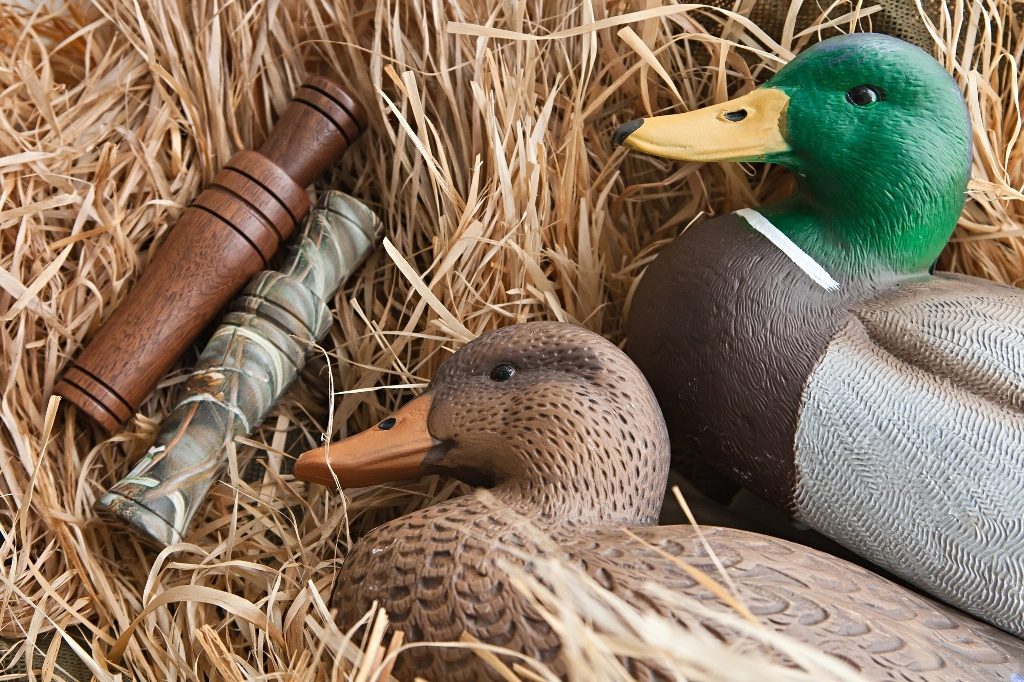
Using Decoys
Use different decoys that represent various species of ducks.
Decoys of other birds which are found where ducks are hunted such as coots can also be added.
This kind of mix provides the contrast that will better attract the ducks.
The decoys must also be visible and located in a place that is conspicuous enough for the ducks to see.
Large spreads of decoys are attractive to ducks and should be considered.
Goose decoys are more visible and should be used even when you are focusing on hunting ducks.
Using Duck Calls
A good quality duck call can attract flocks of ducks to the decoys. Once you have sighted them, call them until they notice your decoys.
At the same time, the call patterns should sound real. Be brief and don’t call more than five times at a stretch. Too much calling will ruin hunting success.
In addition, a good duck call works well at the right time. When ducks are circling and a duck call is made, what follows is a landing of the flock on the decoys.
As the ducks approach the decoys, the call should reduce in volume and get softer.
A good duck call is also determined by the weather. Loud calls work well on sunny and windy days. Cloudy days call for feeding calls or quacks.
You can check out our pick of the Best Duck Calls for Beginners if you are looking for a new duck call for your trip.
Shot Placement
Shot placement is perfected with practice.
You should only shoot when you are sure of the shot.
Once you get it correct, instances of shooting too fast thereby missing the target are reduced.
Good shots can be achieved when done within the range of the shotgun. This way, the birds fall down at a reachable range.
Crossing
When crossing, it is recommended to position the shot ahead of the duck and not behind it.
The barrel should also be in motion. Your instinct should help in ensuring the accuracy of shooting a moving bird. Your focus should remain on the bird and not on the barrel of the gun.
If not, you will miss the shot and the bird will fly ahead of the shot. A crossing shot may also miss if you fail to accurately determine the next movement of the bird which could be downwards or upwards.
So, position the barrel either slightly above or below the flying bird to cater to this eventuality.
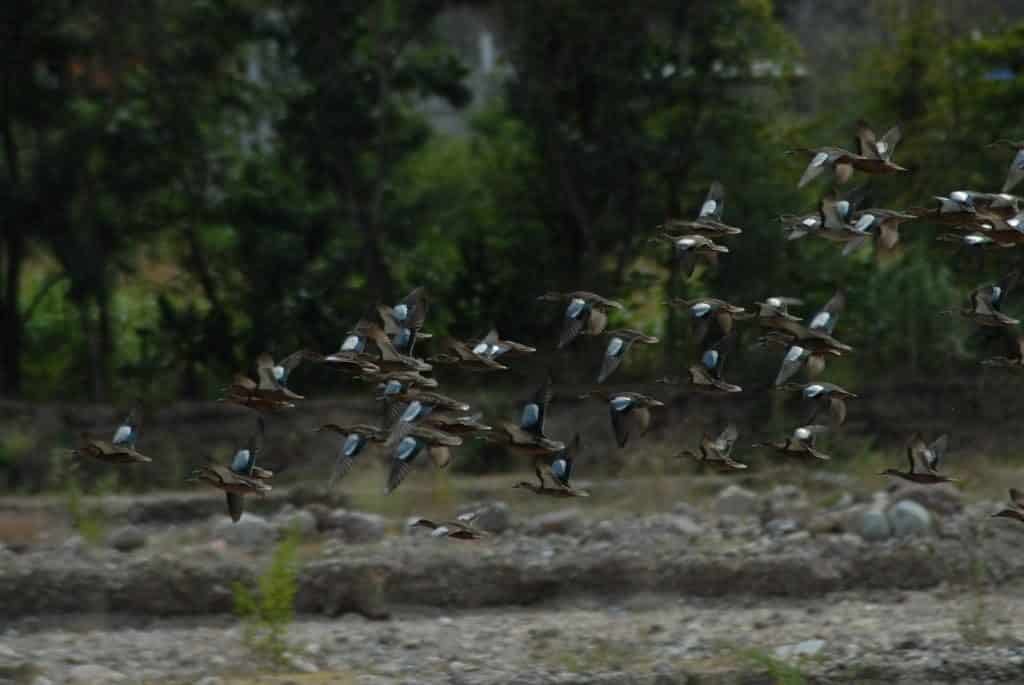
Flying away or Head-on
If the bird is flying away or head-on towards you, start moving the barrel of your gun from behind the duck and pull the trigger only once the bird is covered by the barrel.
Landing
If the bird is landing, the barrel should be beneath the bird moving at the same speed the bird is moving at.
As it descends lower, it will collide with the shot. When the bird is landing, focus the shot on the lower half of the descending bird.
If the bird is flying away from you, do not shoot it since it will not be a good shot. This is because the chances of hitting its head are blocked by the body of the bird.
If you go ahead and shoot, it will only injure the bird and not kill it.
Retrieving, Cleaning, and Field Dressing
Retrieval
Should you prefer to retrieve a hunt using a dog, it is paramount that you train the dog first. The dog will then be able to add value to the hunting experience and distinguish the hunt from a decoy.
Dog training can ensure that the dog is not threatened by the loud sound from your shotgun or will not chase after the targeted ducks scaring them away in the process.
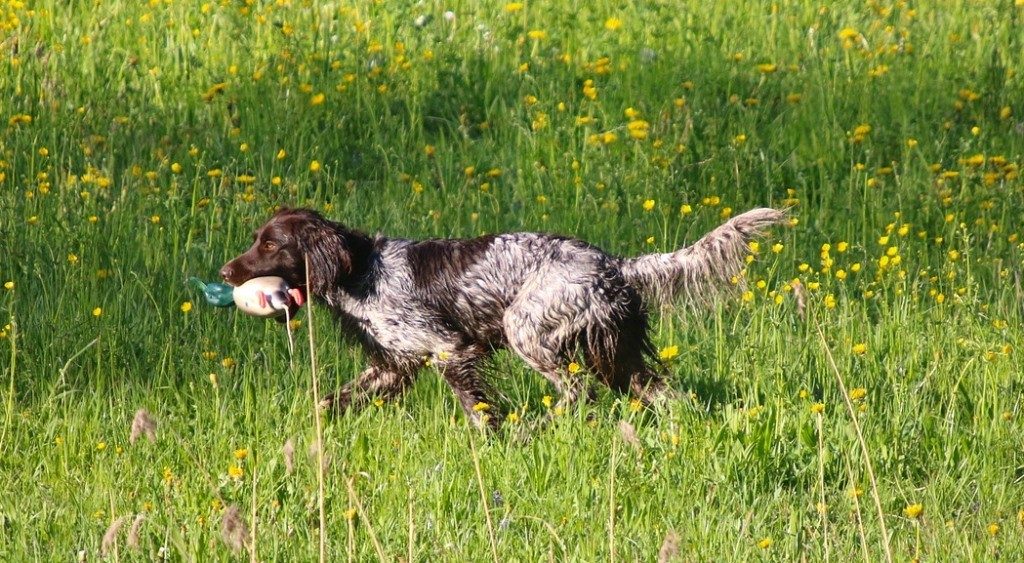
Retrieval of the hunt is still possible without a dog. However, since you will be retrieving the duck carcasses by yourself, this may limit you to hunting in shallow ponds or open fields.
Cleaning
Once the duck is retrieved, it should be cleaned immediately.
It is usually very dirty having been retrieved from a muddy pond via the jaws of a trained dog.
So, any fecal matter around its tail, as well as, any other dirt on its feathers should be well cleaned.
If the carcass is split open before cleaning it, it can render the meat unsafe for consumption.
Field Dressing
Field dressing is carried out after the duck has been cleaned. It is an important process in the overall taste of the duck.
To get started, pluck off the feathers using your hands.
Alternatively, dip the bird’s body with its feathers into hot water. This makes removing the feathers less laborious.
Turn the bird with the breast facing down. Make two cuts along the entire backbone. Separate the head of the carcass complete with the backbone and other attached internal organs from the flesh on the breast.
Cut off the wings and legs. Apply pressure on the meat by pressing it to remove blood. The meat should be preserved at temperatures below 40 degrees or else it is likely to go bad.
Hunting Season and Where to Go
With duck hunting, location matters.
Popular hunting locations include the Southern Saskatchewan particularly during the months of late September to October. It is one of North America’s best spots to hunt ducks.
Dabbling ducks and the Arctic geese are among the waterfowl that breed in the area.
Eastern North Dakota is another famous waterfowl location for the Canada geese and divers among others. Hunting season is usually between October and early November.
The Central Valley of Califonia is home to up to 7 million waterfowl of various species such as pintails and white-fronted geese. The hunting season is towards the end of November into January.
Other hunting regions are South Louisiana, Peace River Country, Alberta, Texas Panhandle, and Eastern Arkansas. Most of the hunting seasons in these areas range from November to January.
The waterfowls found include mallards in Eastern Arkansas and Texas Panhandle, as well as the green-winged teal in South Louisiana and Peace River Country among others.
Regulations and Licenses
Although duck hunting is permitted in North America, regulations have been put in place to protect the birds from extinction while simultaneously generating revenue for preservation.
Duck hunting seasons, for example, are not to exceed 107 days stretching from 1st October to January 20th. Shooting hours have also been limited to one and a half hours prior to sunrise till sunset.
The Federal Duck Stamp is a requirement for hunting migratory waterfowl.
One must also have the recommended state licenses as well as stamps.
Waterfowl, as well as brant, wild ducks, geese, and swans, are classified under migratory birds.
In the State of Alaska for instance, resident hunters must possess a hunting license which they are to carry whenever they are hunting.
Other kinds of licenses include non-resident and alien hunters licenses, and non-resident Military personnel.
In addition to these licenses. A Federal Duck Stamp must also be obtained by waterfowl hunters of 16 years of age and above.
Duck Hunting Code and Ethics
Various hunting codes govern the hunting methods. They include the prohibition of using traps, pistols, fish hooks, and shotguns larger than 10 gauge to hunt the ducks.
The use of live birds as decoys is not allowed unless under the prescribed rules.
Bird calls that are electrically amplified are not permitted when the duck hunting season is over.
Again, only shots that are non-toxic are allowed. The shots should be steel shots.
Waterfowl hunting regions are also specified. Migratory birds can only be taken during the open seasons and not at any other time.
Transporting live animals is not allowed. Bag limits are also set showing that no one should carry beyond what the bag can hold.
Anyone who does not have a permit can be in possession of the waterfowl feathers, skins, or any such body part obtained from licensed waterfowl hunting. However, they cannot be used for ornamental purposes.
Basic Safety Tips
As a duck hunter, you should remain safe while hunting.
Hunters should not shoot themselves or others due to careless handling of the gun. While holding the gun, you should ensure that the muzzle of the gun is pointing in a direction that is not a threat to anyone.
You must be aware of the whereabouts of other hunters and also know where their guns are aiming at. While hunting, resist the temptation of having your finger ready at the trigger.
As a safety precaution, you are required to carry along fire-starting equipment which will help in starting a fire to keep you warm after encountering wetness during hunting.
Notify someone else about your hunting whereabouts and return dates.
Check your gun for any blockages in the muzzle before setting out to hunt.
Always have your cell phone handy in a waterproof material such as a plastic bag. Should you be in need, you can use it to ask for help.
Conclusion
We hope you benefit from this Duck Hunting for Beginners guide. Through this guide, we wanted to introduce you to the duck world that boasts of varied species and the preparation that goes into a successful duck hunt.
In addition, we also wanted to make new duck hunters aware of the various regulations and safety tips to help them operate within prescribed limits.
We hope this Duck Hunting for Beginners guide helps in making your duck hunting experience a memorable one.
Last Updated on December 9, 2023 by Victor Mays
